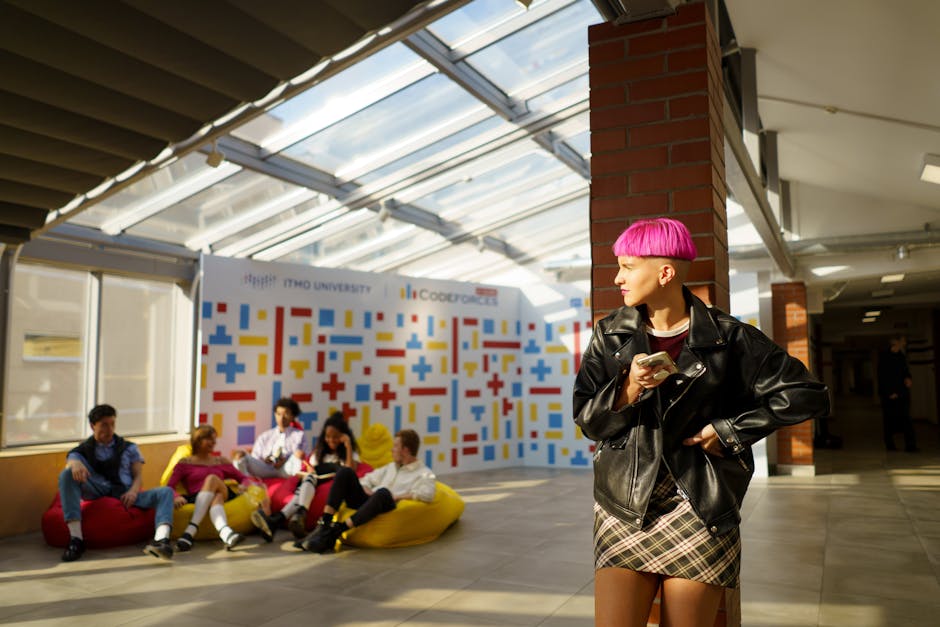
In the world of fashion, creativity knows no bounds. As we step into 2025, a remarkable trend is sweeping the industry, led by innovative fashion design students who are transforming how we perceive and utilize materials. This year, the focus is on upcycling ski jackets, breathing new life into what was once considered outdated or discarded. This movement is not just about fashion; it’s a statement on sustainability and creative reuse that speaks to global concerns about waste and environmental impact.
The Rise of Upcycling in Fashion Design
Upcycling has emerged as a pivotal trend in fashion design, especially among students and young designers who are eager to make a difference. Unlike recycling, which often involves breaking down materials to create something new, upcycling retains the integrity of the original item, enhancing it into something even more desirable. This approach is particularly relevant in 2025 as consumers become increasingly conscious of sustainable practices and the environmental footprint of their choices.
Why Ski Jackets?
Ski jackets are a perfect canvas for upcycling due to their durable materials and vibrant designs. Traditionally made to withstand harsh weather conditions, these jackets are constructed from high-quality fabrics, often featuring bold colors and patterns. This intrinsic quality makes them ideal for transformation into fashionable and functional pieces that reflect contemporary style while paying homage to their origins.
Fashion Design Students: The Pioneers of Upcycling
Fashion design students are at the forefront of the 2025 upcycling movement. Their unique position allows them to experiment with new techniques and styles without the constraints often faced in professional settings. This freedom fosters innovation and creativity, resulting in groundbreaking designs that challenge conventional fashion norms.
- Innovative Techniques: Students are employing a variety of techniques such as patchwork, embroidery, and fabric manipulation to create distinct pieces from old ski jackets.
- Cultural Influence: Many students draw inspiration from their cultural backgrounds, incorporating traditional elements into modern designs, further diversifying the fashion landscape.
- Collaborations: Collaborations with other disciplines such as textile technology and environmental science lead to groundbreaking, sustainable solutions.
Sustainability Meets Style
One of the key elements driving the upcycling of ski jackets is the focus on sustainability. In an age where fast fashion contributes significantly to environmental degradation, upcycling offers an eco-friendly alternative. By repurposing existing materials, fashion design students are reducing waste and conserving resources, aligning with global efforts to combat climate change.
Moreover, the garments resulting from these projects are not only sustainable but also incredibly stylish. The juxtaposition of technical outdoor wear with high fashion elements creates unique pieces that appeal to fashion-forward individuals across the globe.
Global Impact and Future Prospects
The trend of upcycling ski jackets in 2025 is not confined to the United Kingdom; it has gained traction worldwide, with students from the United States to Europe embracing this creative challenge. This global synergy fosters an exchange of ideas and techniques, enriching the fashion design community and expanding the possibilities of upcycled fashion.
Looking ahead, the implications of this trend are profound. As more designers and brands recognize the value of upcycling, we can expect to see a shift in the industry that prioritizes sustainability and innovation. This could lead to more comprehensive educational programs focusing on sustainable fashion, further preparing students to lead the industry into an environmentally conscious future.
FAQ
What is upcycling in fashion design? Upcycling in fashion design involves taking existing garments or materials and transforming them into new, often more valuable items. Unlike recycling, upcycling preserves more of the original item’s structure, contributing to sustainability by reducing waste.
Why are ski jackets popular for upcycling in 2025? Ski jackets are popular for upcycling due to their durable materials and vibrant designs. They provide a strong foundation for creative transformations, making them ideal for students looking to innovate while practicing sustainability.
How do fashion design students benefit from upcycling projects? Fashion design students benefit from upcycling projects by gaining hands-on experience with sustainable practices, enhancing their creativity, and developing unique skills that set them apart in a competitive industry.
Can upcycled fashion pieces compete with mainstream fashion? Yes, upcycled fashion pieces can compete with mainstream fashion by offering unique, one-of-a-kind designs that appeal to consumers seeking individuality and sustainability in their clothing choices.
How does upcycling contribute to environmental sustainability? Upcycling contributes to environmental sustainability by reducing the need for new materials, thus conserving resources and minimizing waste. It also promotes the reuse of existing items, decreasing the overall environmental impact of fashion production.
Conclusion
The revitalization of ski jackets by fashion design students in 2025 is a testament to the power of creativity and innovation in addressing global challenges. As this trend continues to evolve, it not only transforms how we perceive fashion but also underscores the importance of sustainable practices in our daily lives. By embracing upcycling, the fashion industry can lead by example, showing that style and sustainability can coexist harmoniously.
As consumers and designers alike begin to recognize the value of upcycled fashion, we are poised on the brink of a new era where creativity meets consciousness, reshaping the industry for the better. The journey led by fashion design students is just the beginning, inspiring future generations to build a more sustainable world through fashion.


